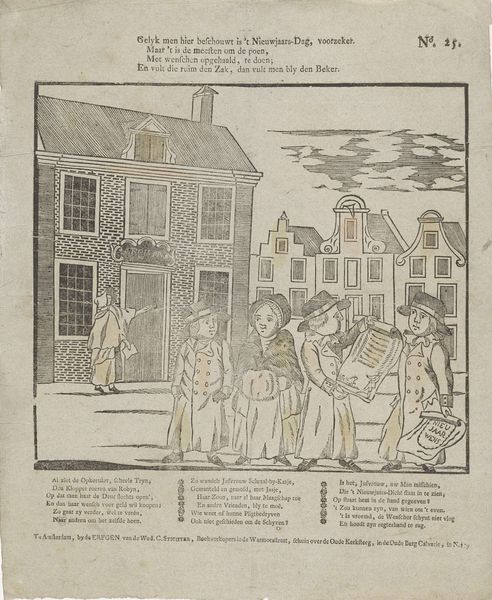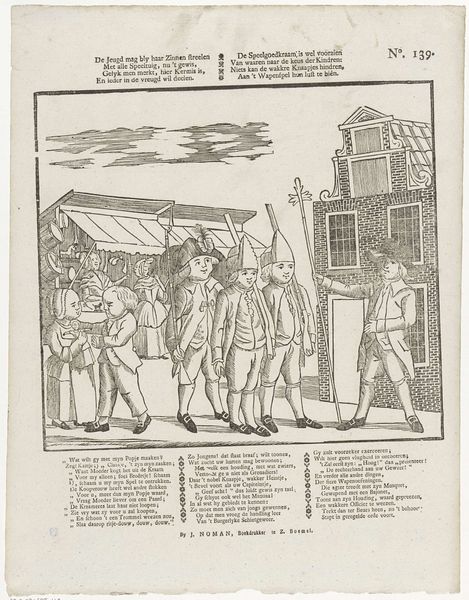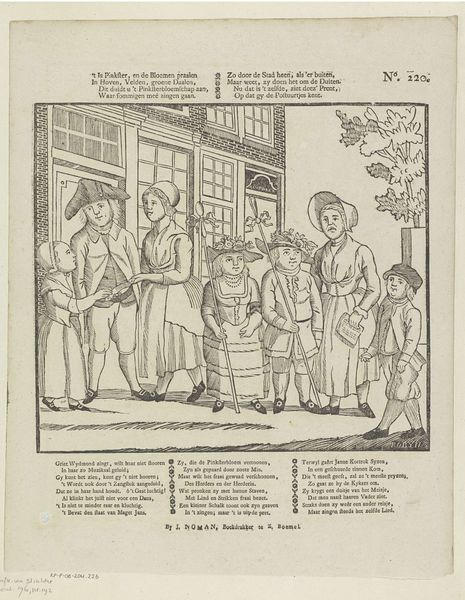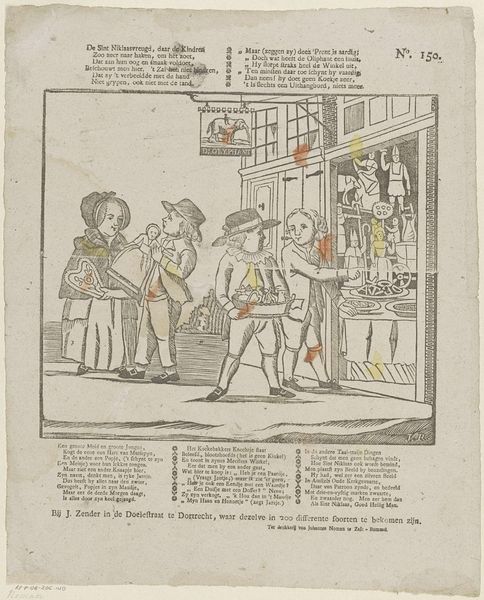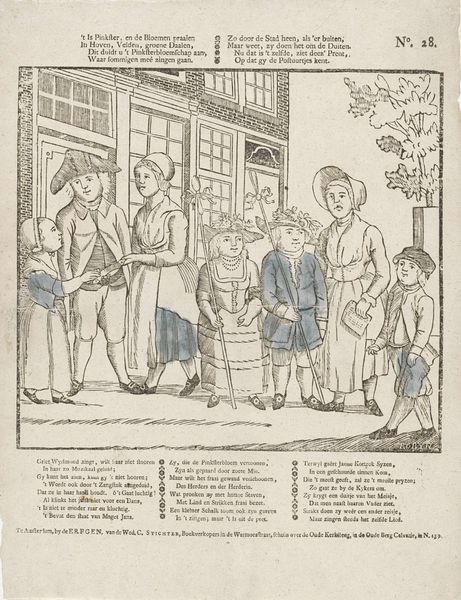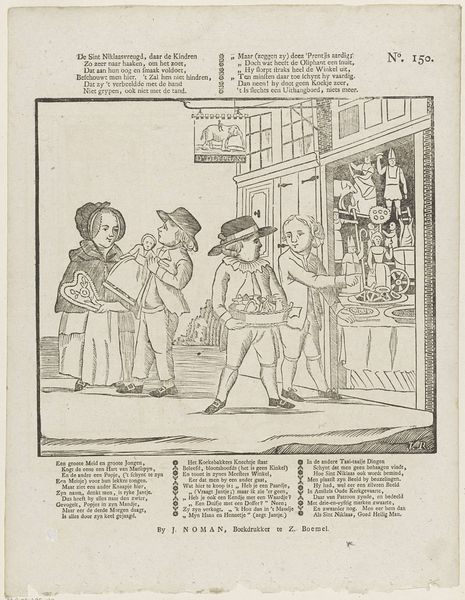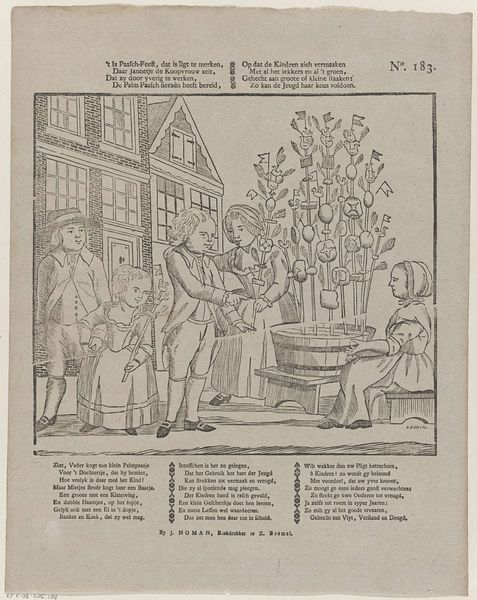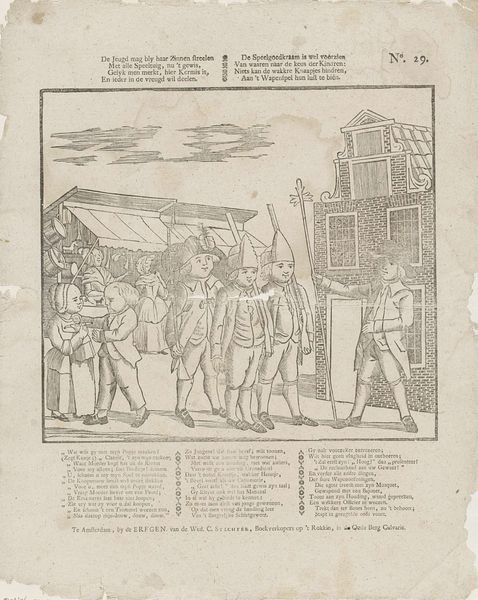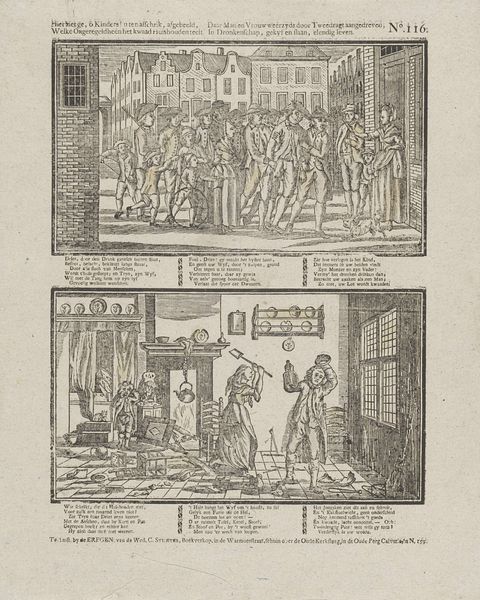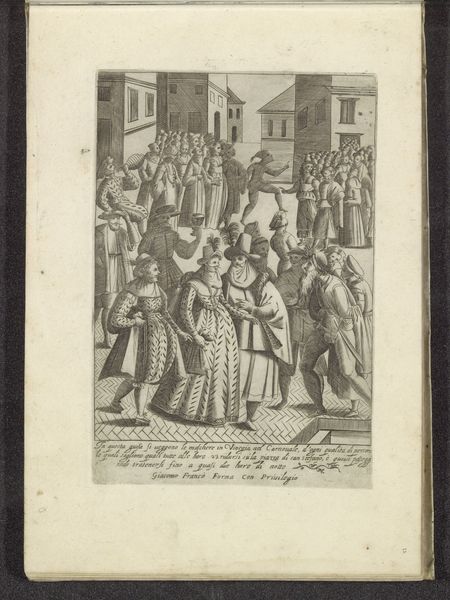
Gelyk men hier beschouwt is 't nieuwjaars-dag, voorzeker. / Maar 't is de meesten om de poen, / Met wenschen opgehaald, te doen; / En vult die ruim den zak, dan vult men bly den beker 1806 - 1830
0:00
0:00
jrobyn
Rijksmuseum
print, engraving
#
narrative-art
#
dutch-golden-age
# print
#
landscape
#
figuration
#
line
#
cityscape
#
genre-painting
#
history-painting
#
engraving
#
realism
Dimensions: height 402 mm, width 314 mm
Copyright: Rijks Museum: Open Domain
Curator: This print, titled "Gelyk men hier beschouwt is 't nieuwjaars-dag, voorzeker..." by J. Robyn, made sometime between 1806 and 1830 using engraving, feels quite dense with information. It's a very clear depiction of a Dutch street, but the figures feel almost stiff. What are your initial thoughts? Editor: It is packed! I'm immediately struck by how the artist uses line – it’s almost relentless. But, stepping back, I see it's capturing a New Year’s Day scene, so, it must speak to aspects of Dutch Golden Age culture, but what deeper meanings or contextual layers am I missing? Curator: Excellent question. Focusing on the materiality, consider the function of this print. It’s not aiming for aesthetic beauty in the way we traditionally define "high art," is it? Look at the inscription – clearly this was produced for mass consumption, more closely aligned with what some might term "folk art." How do we interpret that in terms of its societal function? Editor: So, it's more about the message and its distribution than the artistic merit, at least as it was understood then? The materials themselves become important, as the print enabled that wider distribution, the labour becoming an important factor. Curator: Exactly. Think about the production. The labor involved in creating the engraving, the deliberate choice to replicate this image for public consumption, reflects a different kind of value system. This wasn’t necessarily destined for a wealthy patron’s wall, was it? It documents street life. How does understanding its creation and dissemination affect how you perceive its meaning? Editor: It completely changes it. I was initially focusing on the visual style, but seeing it as a piece of social commentary, cheaply produced, makes the scene far more vivid. Curator: And more valuable as a historical object. The print becomes less about artistic genius and more about labor, access, and social context. Editor: I see what you mean. By thinking about the materials and process, we understand the work’s original intent and societal impact much better. Thanks for pointing that out. Curator: It’s all about shifting the focus. Thinking materially encourages us to re-evaluate hierarchies of value, doesn't it?
Comments
No comments
Be the first to comment and join the conversation on the ultimate creative platform.
